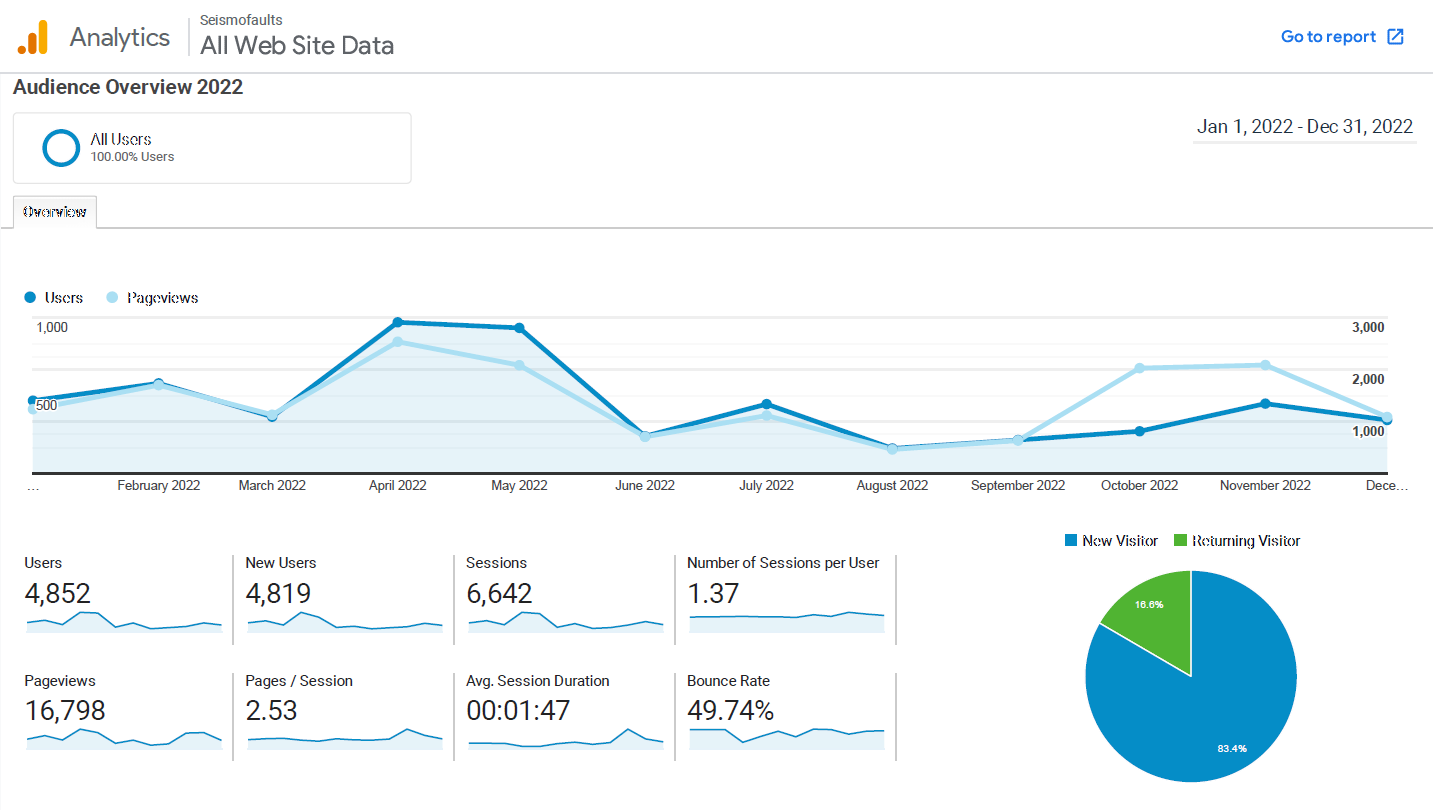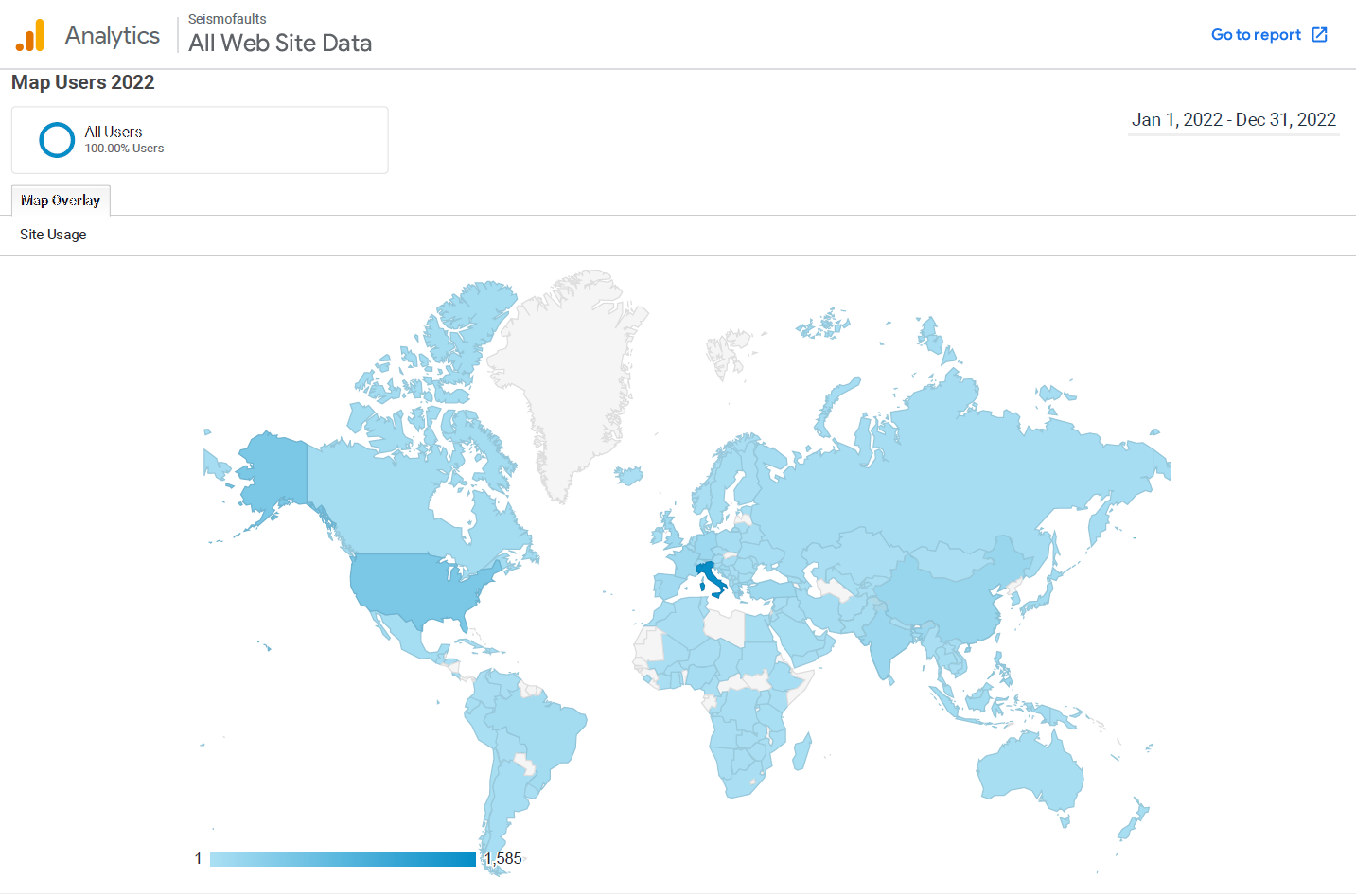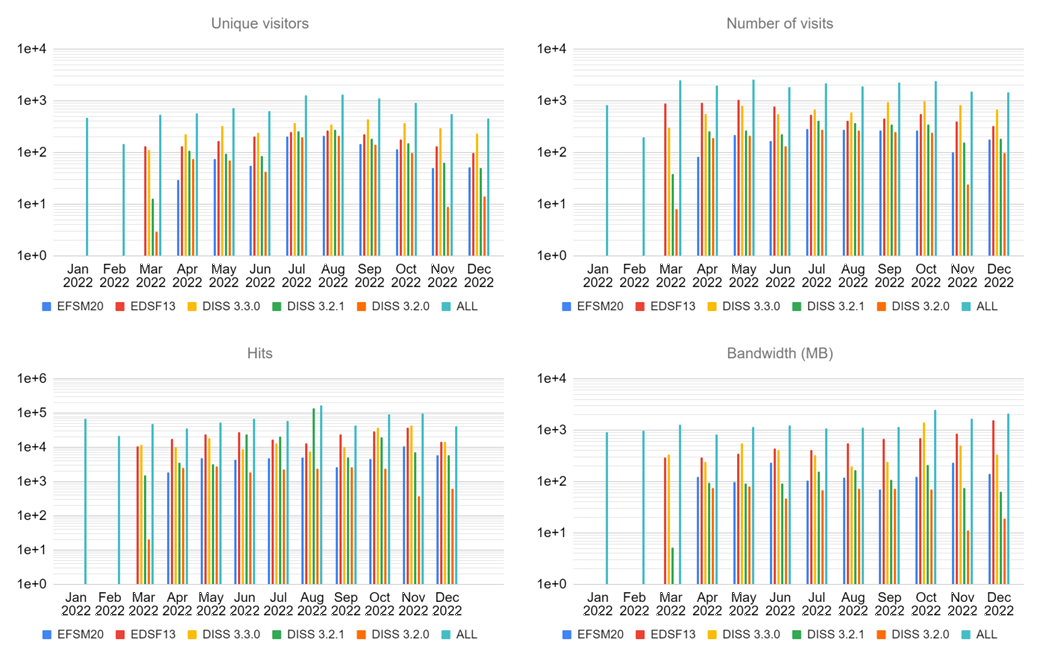Report on the 2022 activity of the EDSF installation
The European Databases of Seismogenic Faults (EDSF) installation operates under the auspices of the EPOS TCS-Seismology work program, particularly those of the EFEHR Consortium, and considers the principles expressed by the EPOS Data Policy. EDSF offers services that distribute data about seismogenic faulting proposed by the scientific community or solicited to the scientific community or stemming from project partnerships that involved the use or development of the EDSF installation itself.
Portal content updates
Datasets
- Added web pages for the new dataset EFSM20
- Added web services for the new dataset EFSM20
- Added web pages for the old dataset EDSF13 and cleared the old external website. The EDSF13 DOI now points to a new landing page.
Documentation
- Added web pages for Data Quality Assurance, Data Management Plans, portal activity report 2022 (this document), and IT infrastructure
- Revised a few items of the Glossary.
- Added menu link to Bibliography with relevant references of the data products and related documentation distributed by the portal as a public Zotero group
Portal access statistics
Access to the portal webpages is monitored via Google Analytics.


Portfolio of distributed services
The portal distributes 38 OGC WFS layers and 54 OGC WMS layers of three different datasets, including multiple versions, as listed in the table below.
| Dataset | Version | Date of publication (MM/YYYY) | OGC WFS layers | OGC WMS layers | ICS-C GUI | DMP |
|---|---|---|---|---|---|---|
| European Database of Seismogenic Faults 2013 (EDSF13) | 2013 | 03/2013 | 4 | 8 | Yes | Yes |
| Database of Individual Seismogenic Sources (DISS) | 3.2.0 | 06/2015 | 6 | 10 | No | Yes |
| Database of Individual Seismogenic Sources (DISS) | 3.2.1 | 04/2018 | 6 | 10 | No | Yes |
| Database of Individual Seismogenic Sources (DISS) | 3.3.0 | 12/2021 | 6 | 10 | No | Yes |
| Database of Individual Seismogenic Sources (DISS) | Current ≡ 3.3.0 | 12/2021 | 6 | 10 | No | Yes |
| European Fault-Source Model 2020 (EFSM20) | 2020 | 10/2022 | 10 | 6 | Yes | Yes |
Access statistics of distributed services
Access to the distributed web services is monitored using AWStats software. Notice that, differently from web pages, in the case of web services, the term "visitor" refers to a user that performs a query to the dataset. Likewise, the terms "visit" and "hit" must be intended to be equivalent to queries. The term "bandwidth" is the total number of bytes (images and files downloaded) transferred by queries.

Thanks to the configuration changes made to the IT infrastructure since April 2022, we can monitor each service individually. March 2022 has mixed data, while in earlier months, we could monitor the service collectively and discriminate between them through data post-processing. Each DISS version includes an access quota to the “current” concurrently active version. Access to EFSM20 before its publication (October 2022) is mostly due to the service testing.

